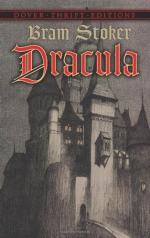|
This section contains 10,176 words (approx. 34 pages at 300 words per page) |

|
SOURCE: Roth, Phyllis A. “Dracula.” In Bram Stoker, pp. 87-126. Boston: Twayne Publishers, 1982.
In the following excerpt, Roth discusses Dracula as a seminal work of Gothic fiction and offers a psychoanalytical interpretation of the novel.
Dracula exerts a complex fascination owing both to Stoker's skill and to the enduring appeal of the Gothic genre of which it is a superb and instructive example, following a tradition originated, by critical consensus, by Horace Walpole with his Castle of Otranto (1764). The most commonly cited pillars of the tradition are William Beckford's Vathek (1786), Ann Radcliffe's The Mysteries of Udolpho (1794) and The Italian (1797), Matthew Lewis's The Monk (1796), Mary Shelley's Frankenstein (1818), and Charles Maturin's Melmoth the Wanderer (1820).
While Stoker's themes and techniques in Dracula resemble those appearing in his other fictional works, only in several of the short tales and Dracula did he write true Gothic fiction, as superbly defined in a recent...
|
This section contains 10,176 words (approx. 34 pages at 300 words per page) |

|


